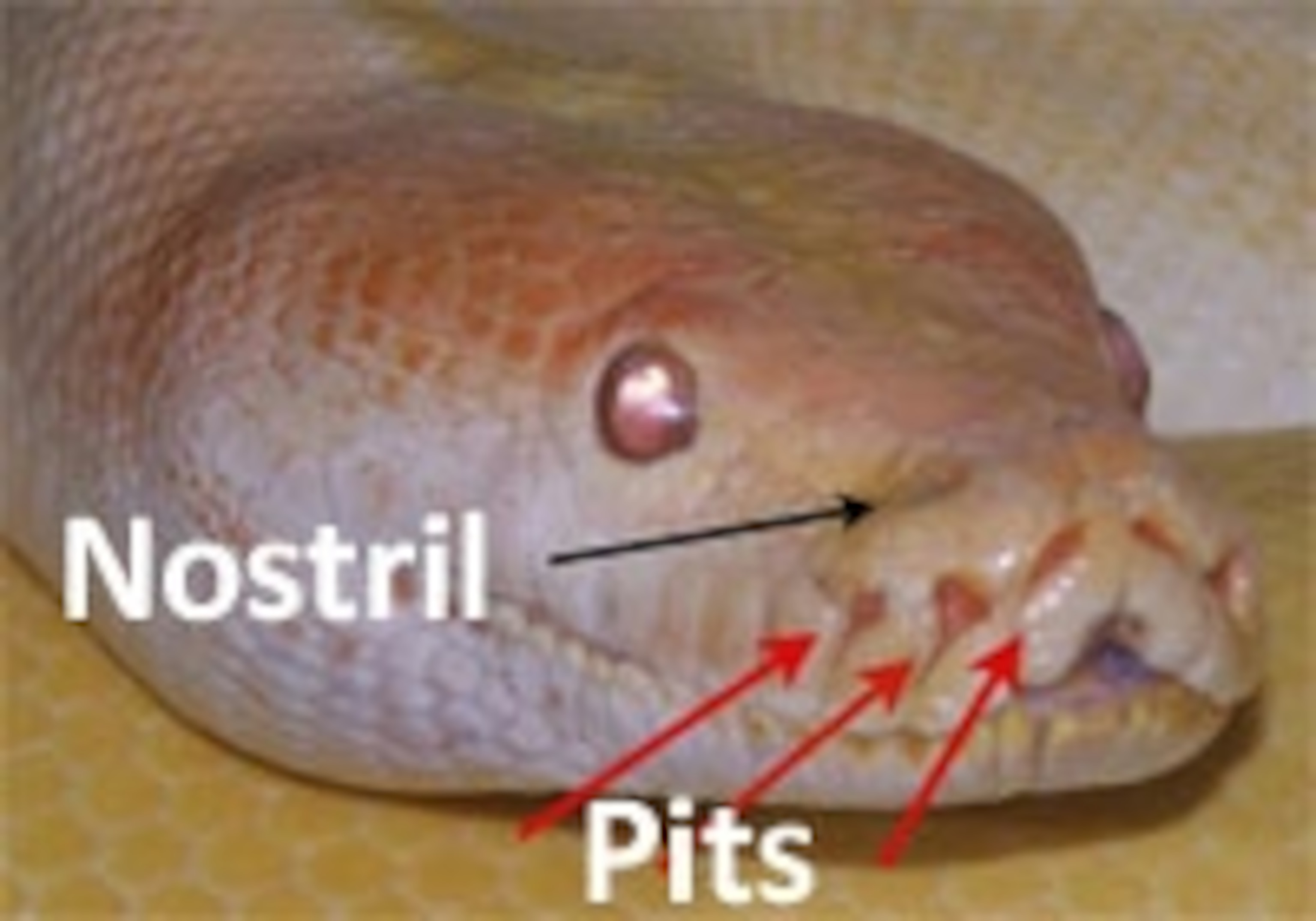
‘Wasabi protein’ responsible for the heat-seeking sixth sense of rattlesnakes
Take a whiff of mustard or wasabi and you’ll be hit with a familiar burning sensation. That’s the result of chemicals in these pungent foods hitting a protein called TRPA1, a molecular alarm that warns us about irritating substances. The same protein does a similar job in other animals, but rattlesnakes and vipers have put their version of TRPA1 to a more impressive and murderous purpose. They use it to sense the body heat of their prey.
Pit vipers are famed for their ability to detect the infrared radiation given off by warm-blooded prey, and none more so than the western diamondback rattlesnake. Its skills are so accurate that it can detect its prey at distances of up to a metre, and strike at objects just 0.2C warmer than the surrounding temperature. Against such abilities, darkness is no defence.
Like all pit vipers, the rattlesnake’s sixth sense depends on two innocuous pits located between their eyes and their nostrils. With two pits on either side of its head, the snake can even ‘see’ heat in stereo. Each pit is a hollow chamber with a thin membrane stretched across it, which acts as an “infrared antenna”. It is loaded with blood vessels, energy-harvesting mitochondria and dense clusters of nerves. The nerves connect with the visual parts of the snake’s brain, allowing it to match up images of both heat and light. So far, so clear, but until now, no one knew how the membranes actually worked.
Elena Gracheva and Nicolas Ingolia, from the University of California, San Francisco, have solved the mystery but it wasn’t easy. Rattlesnakes don’t give up their secrets readily. Their genes have rarely been sequenced and, in what must be the understatement of the year, Gracheva and Ingolia describe them as “genetically intractable” and “inconvenient subjects for physiological and behavioural studies”. To translate: if you’re looking for a model animal to work with, you’re probably better off with fruit flies and zebrafish than a four-foot serpent with a deadly bite.
The duo suspected that the proteins responsible for the rattlesnake’s heat-seeking powers would probably be found in the unusually large nerve endings that suffuse its pit membrane. They analysed the active genes in these nerve endings, and compared them to those running down the snake’s spine.
In mammals, the two types of nerves have virtually identical portfolios of active genes. The same is true for snakes like the Texas rat snake or the western coachwhip, neither of which can sense infrared. But in the rattler, Gracheva and Ingolia spotted an unmissable difference – a single gene that encodes the TRPA1 protein was 400 times more active in the pit nerves than the spinal ones.
In humans, TRPA1 is activated by allyl isothiocyanate, the chemical that gives wasabi and mustard their kick. The rattler’s protein, which is 63% identical to ours, responds to the same chemical but more weakly. It is, however, exquisitely sensitive to heat. At room temperature, the protein is idle. But anything over 27.6C will set it off and the higher the temperature, the more active the protein. By comparison, a rat snake’s version of TRPA1 is also sensitive to heat, but it responds more weakly than that of the rattler, and at a higher threshold temperature.

Two other groups of snakes, the pythons and boas, can detect infrared radiation, although their technology is 5-10 times less sensitive than the sophisticated viper hardware. They also have pits but theirs are spread across their snouts, are simpler in structure and have fewer nerve connections. But Gracheva and Ingolia found that they have independently co-opted the same molecule in their pursuit of hot sensory action, even though their ancestors diverged from those of vipers 30 million years ago.
In invertebrates like flies and worms, TRPA1 also plays a role in sensing temperature changes. In vertebrates, it’s more to do with sensing foul chemicals and possibly cold temperatures but it seems that three groups of snakes have revived the ancient function of these proteins.
And now a question for the audience: Infrared detection seems like an extremely valuable skill, so why is it that only two groups of snakes have evolved it? If it’s all done by co-opting the same apparently malleable protein, why isn’t the strategy more common? I asked the lead author but he had no answer either. Any thoughts?
Reference: Gracheva, E., Ingolia, N., Kelly, Y., Cordero-Morales, J., Hollopeter, G., Chesler, A., Sánchez, E., Perez, J., Weissman, J., & Julius, D. (2010). Molecular basis of infrared detection by snakes Nature DOI: 10.1038/nature08943